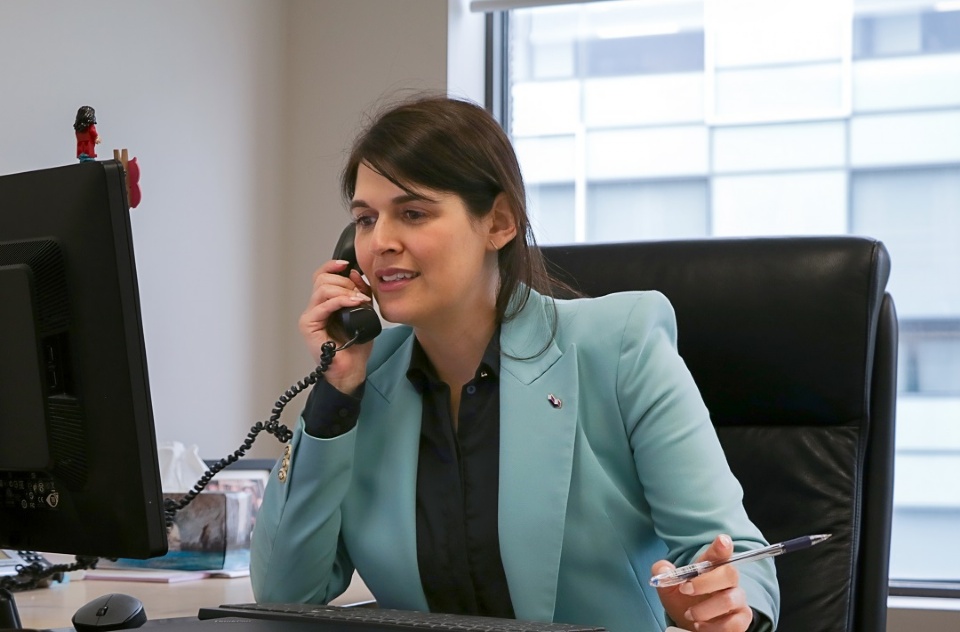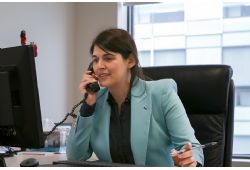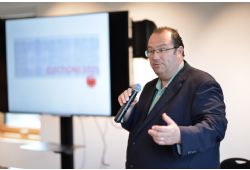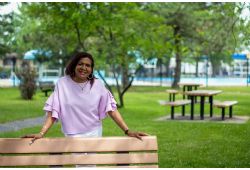Four elected councillors reflect on achievements that make them particularly proud of their city.
Jocelyne Frédéric-Gauthier: For a Bustling CityJocelyne Frédéric-Gauthier first began to get involved in municipal politics in 2009. She was first elected municipal councillor for the district of Auteuil in 2013. Re-elected in 2021, she became the only black woman of Haitian origin with three terms on Laval’s municipal council.In addition to her role as municipal councillor, Frédéric-Gauthier is also Chair of the Board of Directors of the Société de transport de Laval. She is highly motivated for the future of public transport in the city especially in relation to the announcement by the Minister of Transport, François Bonnardel, concerning the establishment of a Project Office which will analyse the implementation of a 15-kilometre corridor linking the Côte-Vertu metro station, in Montreal, to Dagenais Boulevard, in the Chomedey sector, in Laval. As Frédéric-Gauthier explains, this is good news for many young Laval residents, who will be able to access many education and employment centers more easily.Furthermore, the establishment of a rapid bus service serving Notre-Dame and de la Concorde was also announced. The call for tenders was launched in the last few weeks. The 6 km route will extend from Boulevard Curé-Labelle to Boulevard des Laurentides and will improve east-west travel within the city. The creation of another rapid bus service that will relieve congestion on Boulevard Saint-Martin, a very busy artery, was also mentioned. The implementation of these measures will greatly improve the lives of Laval residents, facilitating their access to work or school by public transport—an incentive to encourage Laval residents to use public transit rather than their own vehicle. This is also part of the city of Laval’s efforts to become even greener.Overall, as President of the Société de transport de Laval, Frédéric-Gauthier is extremely satisfied with these announcements. Statistics show that from 2011 to 2021, the Laval population increased by 9 per cent. This makes it even more important to improve public transportation for the well-being of the community, so that Laval remains a city where life is good.Sandra Desmeules: For an Even Safer City
Sandra Desmeules was first elected to the municipal council of Laval in 2013, in the district of Concorde-Bois-de-Boulogne. Responsible for public security, Desmeules is a member of the city’s Executive Committee where she works on innovative projects that will bring concrete changes to the daily lives of Laval residents.Desmeules places the safety of her fellow citizens at the heart of her priorities. This is why she is proud to announce that the 280 firefighters from the nine fire stations in Laval are now trained to respond and intervene to level 1 (PR-1) alerts, namely those concerning cardio-respiratory arrest and anaphylactic shock. To save as many lives as possible, these calls fall into the category of the most urgent interventions, requiring extremely rapid action. “Currently, approximately 1,600 calls per year are received for this type of medical intervention,” Desmeules explains. “Thanks to our firefighters trained as first responders, the response time will be shortened: three to six minutes will be saved. This is a measure that saves lives concretely.”Another source of great pride for the City of Laval is the start of work on the West Gendarmerie Station. To increase the safety of Laval residents, a new police station in the west sector of the island is under construction since August 2021. It will be complementary to the one located in the east of the city, the Valérie-Gignac Station.The new station is a major project aiming for LEED Gold certification, an approval recognizing buildings whose design, construction and operations meet the highest ecological standards. As Desmeules explains, the purpose of this new gendarmerie station is to repatriate more services to the same place, as well as an operational lookout. The City of Laval has invested approximately $60 million in the project. In total, more than 200 police and patrol officers will work for the safety of Laval residents in this four-storey building. “This will allow the police service to be more efficient, by responding to calls more quickly, and to be more effective during these interventions,” she says. “The population of Laval is increasing as well as aging. Improving the response time of police officers and first responders is therefore an important measure that we take to heart.”Pierre Brabant: Making the Dream Concrete
Pierre Brabant describes himself as a true public service enthusiast. After more than 30 years of experience in various departments of the cities of Laval and Repentigny, it was only natural that he turned to municipal politics by being elected to the municipal council for the district of Vimont.For Brabant, municipal politics is the best way to make a real difference in the lives of his fellow citizens. A good municipal councillor, according to him, is someone who listens to people and their needs and who wants to move projects forward. “Municipal politics is like working in a sandbox. And the sandbox is vast in Laval,” he says. “There are many facets on which one can act as an elected official. In short, if I could sum up my career on the municipal council of Laval: I am living my life’s dream.”Several projects are dear to him. Responsible for heritage and history files, he mentions the renovation and expansion of the André-Benjamin-Papineau heritage house, in the Chomedey sector as one of those projects. The expansion includes an annex that will blend in with the original architecture while making the site universally accessible. “Laval’s history is rich, and this major project will give more Laval residents the opportunity to discover it by visiting the historical and cultural heritage found on our island,” says Brabant.Brabant also highlights another important project: the opening of the very first eco-centre in Laval, located at the intersection of Dagenais and Bellerose boulevards, in Vimont. The eco-centre will allow residents and merchants of Laval to get rid of many hazardous materials in a compliant and safe manner. This meets an increasing demand to dispose of everyday household waste that is more or less complex to responsibly take care of such as electronic products, building materials, household appliances, propane tanks, tires, etc.Brabant notes the efforts made by the City of Laval to make it greener, such as the expansion of the Rivière-des-Mille-Îles wildlife refuge. “We are taking giant steps so that, in a sustainable way, the island of Laval preserves its natural environments and remains pleasant to live in!” he concludes.Seta Topouzian: Laval, An Attractive City
Seta Topouzian has always been faithfully committed to the various communities of Laval. Passionate about customer relations and deeply wanting to help others, she plunged into the world of municipal politics by becoming a councillor for the district of Renaud.Topouzian has always been drawn to politics. During her career, she has been involved with many organizations and has always volunteered to go door-to-door or make calls to citizens during election periods. The contact with Laval residents and her desire to contribute to their quality of life is what motivates her. Indeed, Topouzian sees municipal politics as a way to be closer to citizens and listen to them.When asked to name a project of which she is particularly proud, Topouzian notes the ongoing construction of the aquatic complex. This is a major project designed to meet the needs of everyone, both water-enthusiast citizens and aquatic athletes. It will have three pools: one for recreational purposes with water games, a second with corridors and an adjustable floor and a third one reserved for diving with diving boards of different heights, including one of 10 meters.The mission of the future aquatic complex is to promote the practice of physical activities, as well as to encourage the learning of aquatic skills, explains Topouzian. It will also allow young Laval athletes to train in their own city, especially those looking to participate in the Quebec and Canada Games and even the Olympic Games. One of the advantages of the complex is its accessibility, by car and by public transport. According to Topouzian, it will also distinguish Laval regionally and nationally and will become a real incentive not only for families and athletes, but also for tourists.Making Laval attractive is one of Topouzian’s main objectives. “We are in a post-pandemic context. We must think about economic recovery, help citizens get back on their feet and move forward, towards a prosperous future,” she says. “I wish them all a safe and fulfilling life in our beautiful city.”

 In The Latest Issue:
In The Latest Issue:





 BY:
BY: 

Tweet
Share